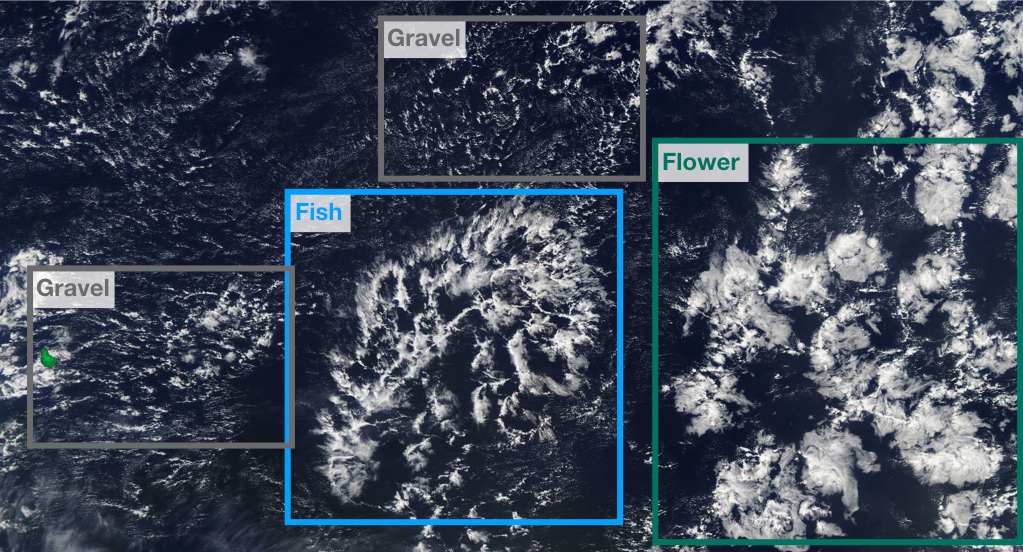Understanding cloud organization from satellite images
Clouds are very fascinating and most people are consciously or unconsciously affected by them every day. They are the imprints of the daily weather but also regulators of our climate. The role that shallow clouds in the subtropical trade wind regions play for our globe’s energy balance is one of the big questions for climate science. One particularly poorly understood aspect of these clouds is that they self-organize into larger patterns, which can often be seen from satellite images. In order to better understand these structures scientists from the Max Planck Institute for Meteorology (MPI-M) and the Laboratoire Météorologie Dynamique (LMD), France, classified ten thousand satellite images into four types of organization which they named Sugar, Flower, Fish, and Gravel.

The scientists now challenge interested people in a competition on Kaggle, a platform that hosts a variety of machine learning challenges, to join this huge community effort. The goal is to build a machine learning algorithm that automates the detection of the cloud patterns by learning from the human labels. The predictions of the algorithm will be scored using data for which the participants did not have the solutions. This enables a fair comparison between different techniques. The competition will run until November 18. The top three teams will share $10,000 prize money.
The symbiosis of the climate science community and the machine learning community will help build predictive algorithms that will lead to new knowledge. Finding out more about these cloud patterns will help to understand the underlying physics of these clouds, which are so important for the future of our climate. This understanding, in turn, will guide the development of next-generation climate models and hopefully reduce uncertainties in climate projections.
Interested people are encouraged to visit the project page.
More information:
Contact:
Hauke Schulz
Max Planck Institute for Meteorology
Phone: +49 (0) 40 41173 183
Email: hauke.schulz@mpimet.mpg.de
